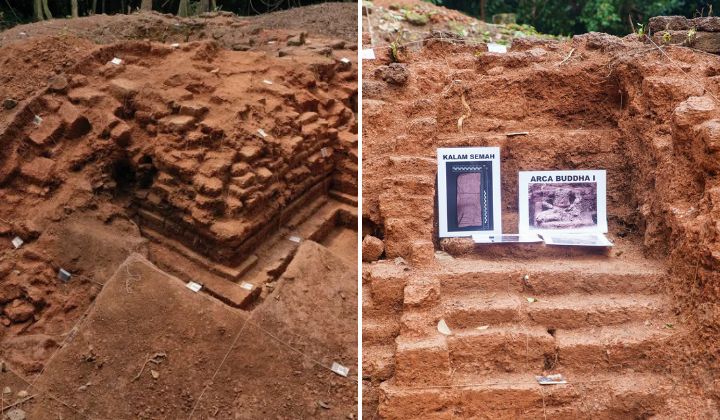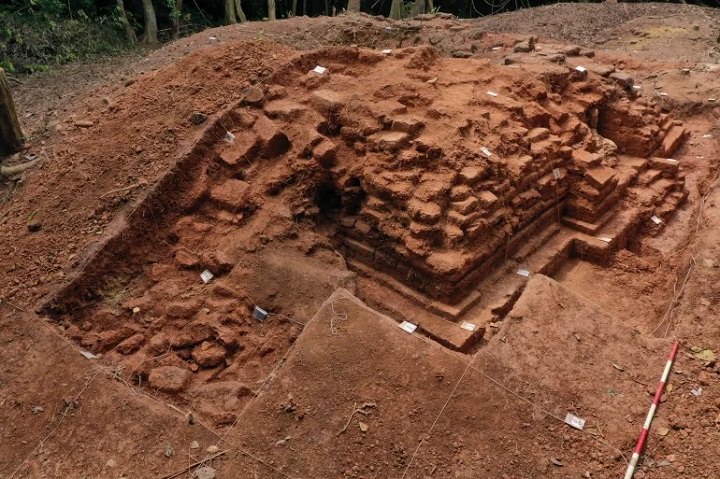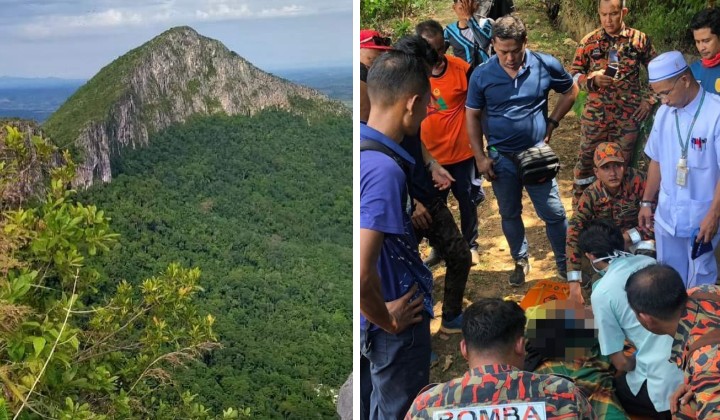Well-Preserved Stupa Found At Bukit Choras Offers Clues About Malaysia’s Multicultural Past
Researchers found a 1,200-year-old Buddhist stupa including two Buddha stucco statues in good condition in Malaysia’s Bujang Valley.

Subscribe to our FREE Newsletter, or Telegram and WhatsApp channels for the latest stories and updates.
If you thought everything in Bujang Valley was destroyed, you were right until now. In August 2023, a team of 11 researchers discovered a 1,200-year-old Buddhist stupa at Bukit Choras in Malaysia’s Bujang Valley in northwest Kedah.
The discovery of the stupa is exciting as it’s the best preserved in the country and experts say it could hold the key to Malaysia’s multicultural past, especially Ancient Kedah’s history.
Dr Nasha Rodziadi Khaw, the chief researcher of the team from the University of Science Malaysia’s Global Archaeology Research Centre (CGAR) in Penang, said the site is an anomaly because it stands all by itself.

According to Al Jazeera, the stupa is isolated on the northern side of Mount Jerai unlike the 184 archaeological sites discovered in the Bujang Valley.
Nasha said the stupa measured about nine metres long and the most important discovery was two stucco statues of Buddha in good condition that have not been found in the area before.
According to Nasha, stucco was thought to be only found in Java and Sumatra in Indonesia, and India, at the time.
The two Buddha statues feature an inscription in Pallava, the language of the Pallava Dynasty that ruled in South India between the 3rd and 8th century CE.
The statues also have architectural features resembling the other artefacts from the Srivijaya kingdom that prospered between the 7th and 11th centuries CE, in an area from southern Thailand, through the Malay peninsula and into Java.
Currently, the statues are being studied and restored at CGAR in Penang.
Nasha said the function of Bukit Choras is not clear but it might have been a military garrison or coastal trade outpost. He shared that preliminary findings showed there are plenty of similarities with other sites found in Java and Sumatra, Indonesia.
The team plans to work at the site throughout the first half of 2024 to unearth its secrets.
Asyaari Muhamad, a senior archaeologist and the director of the Institute of the Malay World & Civilisation at the Universiti Kebangsaan Malaysia, said it was important for researchers to collaborate and reach a better understanding of the origins of civilisations in and beyond the Malay peninsula.
Any statements about new or previous findings need to be carefully examined so that […] a theory, discovery, and the results of a study do not become an issue and controversial in nature.
Asyaari Muhamad, a senior archaeologist and the director of the Institute of the Malay World & Civilisation at UKM
How did Nasha and the team discover the stupa?
Nasha said a British officer first reported about Bukit Choras in 1850 while looking for treasure. It was briefly studied by another British scholar, HG Quaritch Wales, in 1937.
Wales undertook minor excavations and found a squarish Buddhist stupa. He took note of the measurements but never provided any illustration or plate for the site.
In 1984, fifty years later, the then-director of the Bujang Valley Archaeological Museum returned to Bukit Choras to do some site cleaning and documentation. Other than that, the site remained largely undisturbed.
Nasha realised no one had done a proper investigation since then. He managed to scrounge up funding to survey the site in 2017.
They used electronic waves to physically detect what was hidden underground and found big structures below.
In 2022, Nasha received more funding from Malaysia’s Ministry of Higher Education to conduct proper excavations.
Nasha and his team were stunned to discover the well-preserved site compared to the other sites in the Bujang Valley that have deteriorated due to erosion, human activities, and accidental destruction.
Can you take a look at it?
The Department of National Heritage said the site has the potential to be a tourist attraction and it’s being preserved under Act 645 of the National Heritage Act 2005 at the moment.
Since the other sites have been damaged, it’s not a surprise if the authorities want to preserve and protect the latest site the best they can with the help of the public.
The department reminds the public to immediately report any findings that have significant historical and heritage impact to them or the relevant authorities.
What was the “Ancient Kedah Kingdom” like?
The Bujang Valley sites showed that an ancient civilisation once thrived here. Referred to as the Ancient Kedah Kingdom, it prospered between the 2nd and the 14th century CE.
The kingdom predated the arrival of Islam in the region and stretches across the northwestern coast of the Malay peninsula and into Thailand.
Ancient Kedah grew on rich international trade and the production of iron and glass beads. Multiethnic and multireligious residents and foreign traders lived together.
Nasha shared that findings in the area suggested that traders from China, India, and the Middle East came to the area for centuries to do business. They often spent long spells in Kedah when the harsh monsoon seasons made sailing home impossible.
Archaeological discoveries showed that Ancient Kedah went into a decline when climate transformed the large maritime bay and accessible riverways leading to the iron smelting site of Sungai Batu into mangrove and tidal swamps that were impassable to ships.
READ MORE: Did You Know That The Oldest Civilization In Southeast Asia Is In Sungai Batu, Kedah?
Share your thoughts on TRP’s Facebook, Twitter, and Instagram.





